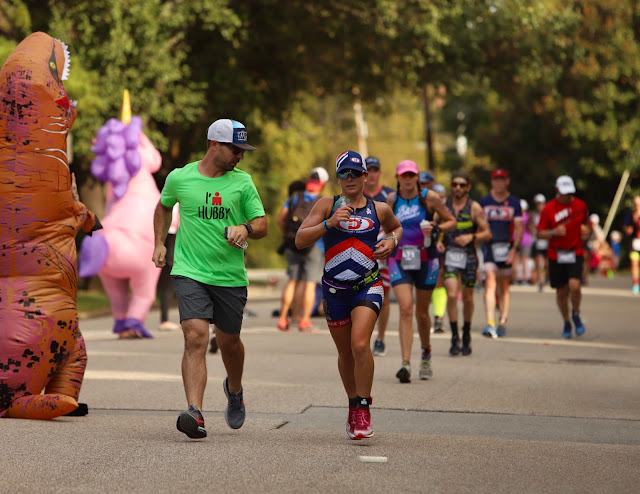With triathlon coaching, most of my exercise prescription is done online, and I have to be able to trust that my athletes will do their strength training with the correct form, that they can determine the appropriate rate of increasing load, and that they know the difference between a hard exercise and an exercise that may hurt them. Even though I'll continue to lose sleep over this, I've started a list of common strength training technique mistakes that I've noticed over time. This list is by no means all-inclusive, but it's at least a starting point to make sure you're preventing injuries or imbalances that could be caused by these simple mistakes.
1. Plank: Lower Back Sinking Down: You probably know that sticking your butt up into the air is not the right way to do a plank, but be careful of your back sinking down too low as well. My favorite cue for this one is to engage your core by actively pulling your feet and your elbows towards each other as hard as you can. With this level of engagement, you might not be able to hold the plank as long, but you'll get more out of it. Make sure your elbows are directly under your shoulders too.
2. Calf Raises: Feet Rolling Laterally: This is a common mistake because rolling to the shorter toes on the outside of your foot is the path of least resistance. Your body will always try to take the easy way out when you're not paying attention. Focus on pressing through your big toe to engage your gastrocnemius (the big calf muscle). You'll also find that if you have trouble balancing on one leg, pressing evenly through all of your toes will help solve that problem.
3. Overhead Press: Arching Back to Push Heavier Weight: You might be doing this because your body has convinced you that it's a good way to lift heavier, or you might lack the shoulder mobility necessary to do an overhead press. Either way, save your lumbar spine and don't do it! Stabilize your lower back to the bench by engaging your core.
4. Squat: Body weight shifts forward, into toes (rather than back, into heels): This picture is an exaggeration of body weight shifting forward. Your feet could be completely flat to the ground, with the majority of your weight in your toes, and that would still be wrong. Give your knees a break and activate your posterior chain by placing your weight in your heels. It should feel like you are sitting back into a chair. In fact, you can practice, by sitting back onto something until the right feeling sinks in.
5. Squat: Not squatting low enough: If you don't squat to at least a 90 degree bend in your knees, the force of the weight won't transfer from your knees to your hips. This range of motion is what allows activation of the glutes, and takes the stress away from your knees. Don't forget to brace your core!
6. Deadlift: Rounding your back: I don't even have a "wrong" picture for this one because it hurts my strength-coaching soul to even replicate. Your spine has a natural curve that you should maintain when you deadlift, but don't excessively round your spine to pick up the weight. Engage your lats and your core, and let your legs actually help you do the lift.
7. Pushups (or anything in the prone position): Straining your neck to look forward: It seems natural to look forward, but not only are you putting unnecessary stress in your neck, you're closing the neural transmission along your spine that allows your brain to communicate with your muscles. Focus your gaze to the ground for better results.




















